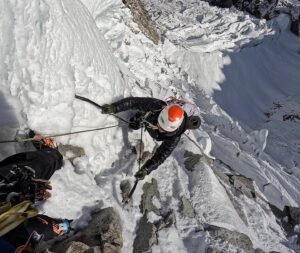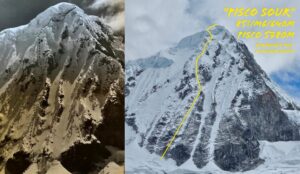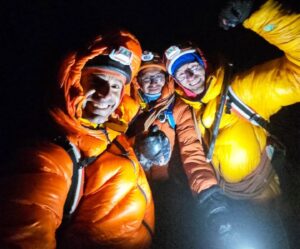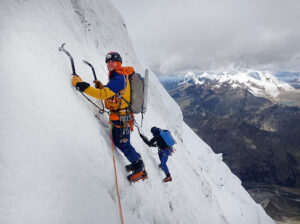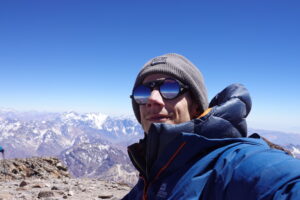Again, a foreign climber has died on Aconcagua in a possibly avoidable accident. This marks the third fatality this season on a frequently underestimated mountain.
Anthony Simmans, 41, of the U.S. launched his summit push on Tuesday, together with another climber and one guide in bad weather. At a certain point, the guide said that they should turn around. But the climbers ignored the warning and continued toward the summit, the police in Mendoza told local media.

A climber nears Aconcagua’s summit. Photo. Shutterstock
After reaching the top, Simmans started showing signs of Acute Mountain Sickness. The guide helped him — and eventually dragged him — down to a sheltered place. Here, he administered supplemental oxygen to the ailing climber.
At the same time, four rescuers headed up and joined them at 6,600m (possibly at The Cave, near the bottom of La Canaleta), Telam.ar wrote.
Simmans was carried down in a stretcher, despite the darkness, rough weather, and hard snow. The rescue party reached the Independencia refuge at 6,300m at 4 am on Wednesday. By then, Simmans had no vital signs. They performed CPR without success. The descent continued, and the climber was taken to the hospital where his death was confirmed.
The guides’ dilemma
According to the official report, when the climbers ignored the warnings and proceeded to the summit, the guide “decided to follow them for safety reasons.” In fact, it is more than a question of safety — it is an ethical and professional responsibility.
“Guides are not supposed to leave their clients alone, even if their own safety is at stake,” Fernando Jadur of Acomara Aconcagua Expeditions told ExplorersWeb. “If a client disobeys the guide’s instructions and continues, the guide must report to the Park officials, but follow the client anyway.”

File image of an emergency airlift on Aconcagua. Photo: Zonda
He added: “This is a problem, especially in groups with several climbers [with different opinions and skills]. That is why the number of guides is important. As well, guides should brief the group every day about conditions, risks, procedures, and decisions.”
Jadur estimates that many groups have just two guides for eight people.
“We assign two guides for a six-member group, and three guides if there are seven clients,” he noted.
As we previously mentioned, Aconcagua requires no climbing skills in good conditions, but it is 6,962m high and is subject to frequent storms and high winds. Unlike the normal routes on 8,000m peaks, there are no fixed ropes from bottom to top, nor is supplementary oxygen available at every moment.

Climbers head up to Base Camp at the so-called Plaza de Mulas. Photo: Fernando Jadur/Acomara Aconcagua Expeditions
Local patrols have initiated 28 rescues in the last month alone, a spokesperson told El Pais.
“Every year, we see fewer experienced people…on this increasingly commercialized activity,” Ignacio Roge, the chief of the Aconcagua medical service for 13 seasons, told the Clarin newspaper.

